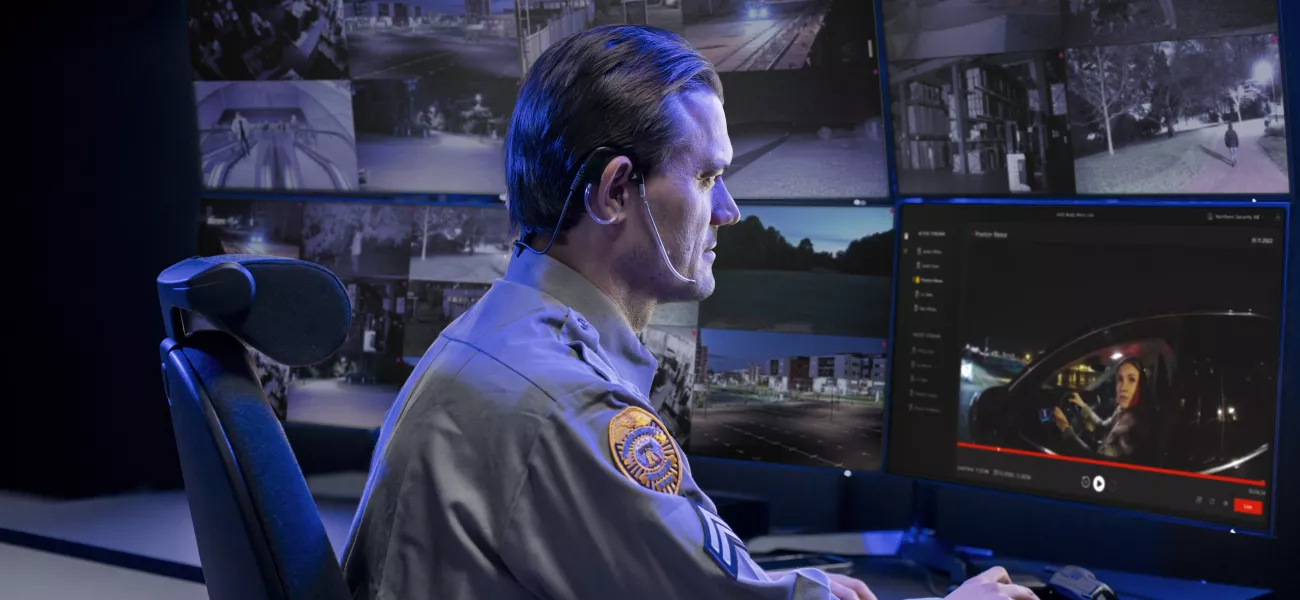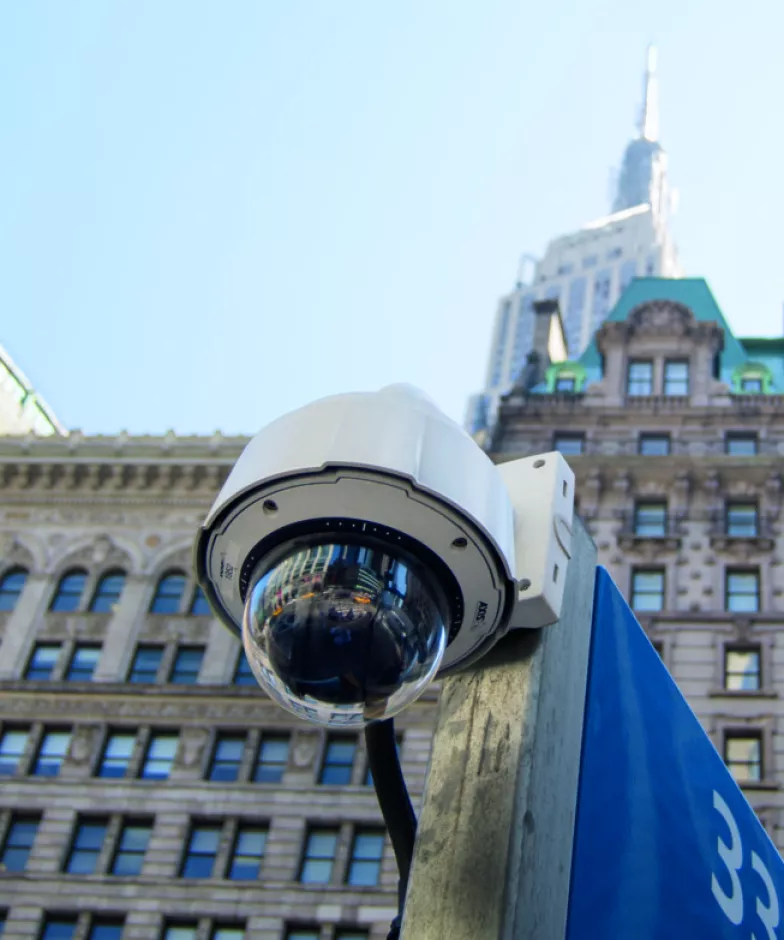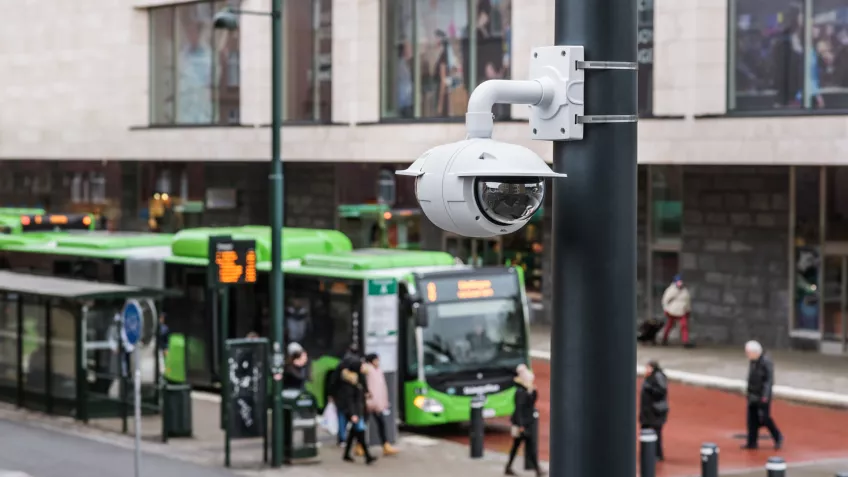
Keeping citizens safe and using police resources in an efficient way can be a challenge for many cities and regions. In this article we describe how great image quality can help solve crimes and how Axis technology can be a force multiplier when used in combination with trained analysts in real time crime centers.
With a 20-year career in the police force in Colorado, practical experience has shown me that intelligence is fundamental to police effectively. Intelligence gives officers safety when dealing with developing situations, because it helps their understanding of what they are walking into. Meanwhile, for the citizens they serve, intelligence means a greater chance of deterring criminal activity - as well as resolving crimes after the event.
Intelligence is based on data, and data is what a real time crime center (RTCC) provides in a highly efficient way. A RTCC is a camera surveillance control room for law enforcement purposes, manned by trained analysts – who are not necessarily police officers – to monitor and identify activity relevant to supporting effective police activity. To achieve this, a RTCC relies on data, generated by network-connected cameras with a deep learning analytics capability.

This deep learning analytics capability means that cameras can automatically recognize the situations and objects they are exposed to, and then alert the RTCC personnel when necessary. This could include identifying a specific license plate or noting a gathering of people at a location, to acting on an audible sound input, such as a gun shot, screaming, or glass breaking.
The advantage of this information is twofold: recognition could be instant, creating an alert to help deter a crime that might be about to take place; in addition, it could be used to aid an investigation, as well as legal proceedings, following criminal activity.
The advantages of the real time crime center
The wide reach of network-connected cameras across a city, managed by a central team, is a force multiplier. It puts more eyes and ears where they’re needed.
The approach is also a highly efficient way of increasing police capabilities. Analysts manning camera monitors don’t require the same level of training as a police officer, while they also free-up police officers to do what they’re trained to do. Cameras also generate a greater volume of accurate intelligence than police officers alone. They can operate 24/7, night or day, and provide automated incident alerts across widespread locations.
Yet, despite this extra intelligence strength, network cameras can mitigate over-policing. Instead of relying purely on patrols, network cameras can optimize police presence, while providing specific, actionable suspect information in real time.
Efficient and scalable policing
Establishing a RTCC does not require high initial investment: it can be scalable, from a single camera analyst and cameras installed at limited, key locations, through to several analysts monitoring automated alerts from city-wide cameras.

When looking to set up a RTCC, it’s crucial to identify the overall policing objective and ensure alignment to optimize its effectiveness. Whatever the goal – whether that’s reducing a prevalent type of crime, through to improving situational awareness for officers attending a specific type of incident - this will determine the number of cameras, their layout, and the type of technology required.
It’s also crucial to communicate the advantages of a RTCC with the community, sharing how the technology can create safer and more livable neighborhoods, while achieving a well scaled police presence.
Time and space for an effective response
So how does a RTCC work in practice? Data is provided by network cameras, equipped with the correct deep learning capability, such as Object Analytics and Audio Analytics. This technology can analyze and report on what it ‘sees’ or ‘hears’, and provide alerts on abnormal situations, such as a gathering of vehicles or people taking place in specific locations. Via the Video Management System (VMS) software, the operational interface for RTCC operatives, customized alerts to specific events can also be generated and managed.
Network cameras can also work in conjunction with existing intelligence, like identifying specific vehicles moving into the city based on a vehicle description or with license plate recognition technology. With these techniques, Police officers in Hartford, Connecticut, have effectively used a RTCC to assist with BOLO (Be on the Lookout) cases.
Taking a developing situation, such as an abnormal gathering of people, the camera analyst receives an automated alert that they communicate to police colleagues, who can plan the response. This enables prior police intervention with the potential to deescalate and prevent a disturbance from taking place.
Accurate data on the scene, such as the volume of people or vehicles involved, also means improved response scaling, ensuring the safety of police officers, and preventing over-policing. This intelligence also assists with improved tactical planning to create the most effective response; the more information police officers have at outset, the more time and space that will be available during tactical decision making.
That said, if the situation escalates, live camera data can alert and direct police officers to what is happening, where, and when - and even by who, from descriptions of individuals and vehicles. This intelligence can assist with stopping crimes in progress, as well as directing arrests on the scene.

For police officers on the ground, body worn cameras can also provide extra support. Their presence has the potential to deter criminal activity and increase officer safety and support via live streaming. These cameras also help ensure accountability, both for the community and police officers involved. The technology is also useful addition during investigations, and for use as evidence.
Improving forensic investigation
The effectiveness of criminal investigation relies on time; the more data we have from the scene and the protagonists involved, the faster the officers can operate, and the more likely they will be to apprehend bad actors. At the same time, the greater the information availability at outset, the quicker we can prove who did not commit an offense.
As data from a deep learning analytics-equipped camera can tell us who or what was where, and when, with an accurate description, we can ‘search’ relevant description criteria across the coverage of the camera network, effectively shortening the investigative timeline.
Compared to an automated camera analytics system, there’s no guarantee that investigators will find what they need from a manual video inspection. That said, a network camera with a deep learning analytics capability depends on a usable image. Whatever the conditions, the camera must be able to capture an image that clearly and accurately represents the scene. To ensure high image quality across all practical conditions, this might also demand camera technology such as Lightfinder, giving clear, color images even at night, and Wide Dynamic Range, that minimizes noise in scenes of high light contrast.
While video quality is important to aid an investigation, it’s also critical to legal proceedings. Should the video be used to support criminal prosecution, it’s increasingly important to confirm its validity. Technology such as Signed Video adds a cryptographic checksum directly to the camera where the footage originated, effectively proving that the video has not been tampered with.
Better policing for safer communities
Most significantly, the advantages of the RTCC are for the communities they help to protect their citizens. To do this relies on cameras with deep learning analytics capabilities, that can reliably provide useable images to achieve actionable intelligence. Policing will continue to depend on the expertise of its force, but the RTCC will increasingly assist officers to create safer communities.
